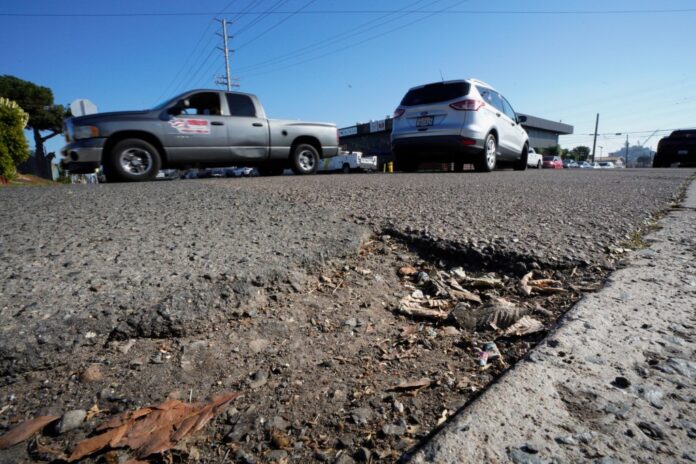
In the wake of rising traffic fatalities, California cities are looking for new ways to reduce them. Two complementary concepts have emerged in the last few decades as possible solutions to improve the accessibility and safety of roads: Vision Zero, which aims to eliminate all traffic deaths and injuries, and Complete Streets, which promotes designs that give better and equal access to pedestrians, bicyclists, and transit riders, in addition to drivers. Unfortunately, these policies are failing in Los Angeles and other cities, with traffic fatalities continuing to climb even after their implementation.
Areas across the state have increasingly embraced these two concepts in recent decades. In 2008, Los Angeles adopted a Complete Streets policy in response to 2008’s Assembly Bill 1358, signed by Gov. Arnold Schwarzenegger, which requires local jurisdictions to plan for a balanced, multimodal transportation network that meets the needs of all users, including transit riders, pedestrians and cyclists.
Los Angeles went further than the state law required. In 2015, Los Angeles also adopted a Vision Zero program aiming to eliminate traffic deaths. In part, Vision Zero and Complete Streets use data collection to identify priority corridors and create a high-injury network map showing where the most accidents and fatalities occur. The high-injury network research showed that just 6% of the city’s streets accounted for 70% of pedestrian fatalities. To target these dangerous areas, the 2018 Vision Zero Action Plan included 100 signal improvements throughout the city, as well as curb extensions, curb ramps, speed humps, intersection tightening, and sidewalk repairs.
Some early positive trends of lower fatalities coincided with Complete Streets implementation in 2008, but much of the progress was lost leading up to and following Vision Zero’s implementation. In Los Angeles, traffic fatalities increased sharply from a low of 157 deaths in 2011 to 312 fatalities in 2022, the most recent year with complete data available.
So, with the city’s approach failing, what can be done better? The National Highway Traffic Safety Administration’s Fatality and Injury Reporting System Tool shows 1,721 fatal motor vehicle crashes occurred between 2016 and 2021 in Los Angeles. Of those, 696 fatal crashes occurred at intersections, while 1,025 were in midblock areas. Data show nighttime was more dangerous, with 1,162 fatal crashes occurring at night. However, most fatalities occurred on lighted stretches of road, with 68% occurring on a mix of Interstates, expressways, and principal arterial roads. Of the 1,721 fatal traffic crashes, 794 involved pedestrians and 97 involved cyclists.
These findings suggest that traffic fatalities could be reduced by implementing grade separations, which put different modes of transportation, like pedestrians and bicyclists, at different heights than cars. Shifting cyclists and pedestrian traffic out of the way of automobile traffic where possible and effective, including building bicycle boulevards designed for bike traffic in high-ridership and incredibly accident-prone areas, can be costly, so grade separations should primarily be considered in spots with significant traffic across multiple modes where they could significantly reduce accidents.
Education and enforcement campaigns to ensure drivers properly yield at pedestrian crosswalks, especially mid-street, could also reduce traffic accidents and fatalities. Based on the Federal Highway Administration’s estimation, crosswalk visibility enhancements like high-visibility markings, overhead lighting, and in-street yield signs, paired with curb extensions, could reduce crashes by 23%-48%.
Policymakers across Southern California should learn from the Vision Zero program’s failures. Achieving zero fatalities is a worthwhile but likely impossible goal. Even with the lowered speeds called for by Vision Zero and Complete Streets, human error and impaired driving can limit the effectiveness of some design changes and precautions.
As the region’s work and commute patterns evolve, road safety interventions should be measured annually to assess their effectiveness and identify better potential solutions. The most expensive traffic calming measures should be reserved for the most dangerous stretches of road, and policymakers should focus on practical, cost-effective steps to improve safety and reduce traffic deaths.
Jay Derr is a transportation policy analyst at the Reason Foundation.
Originally Published:



